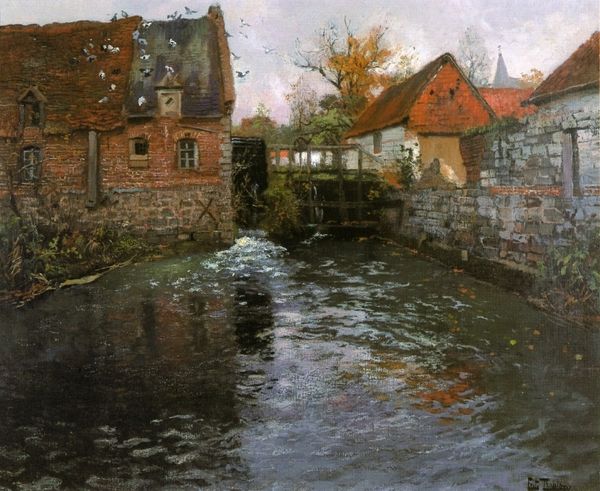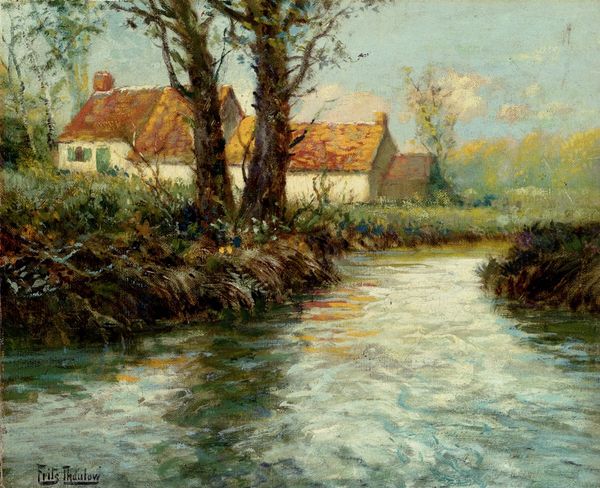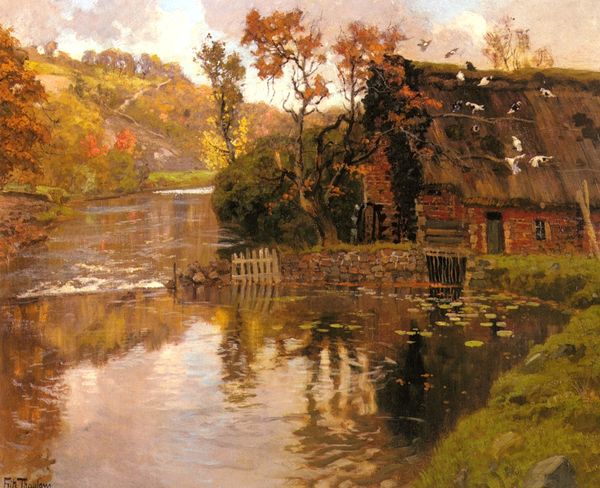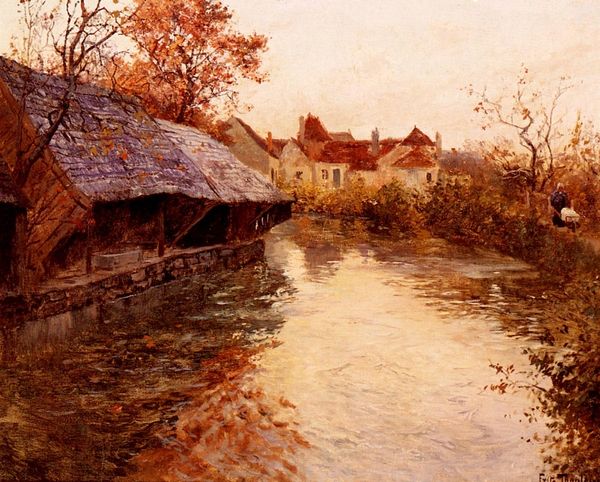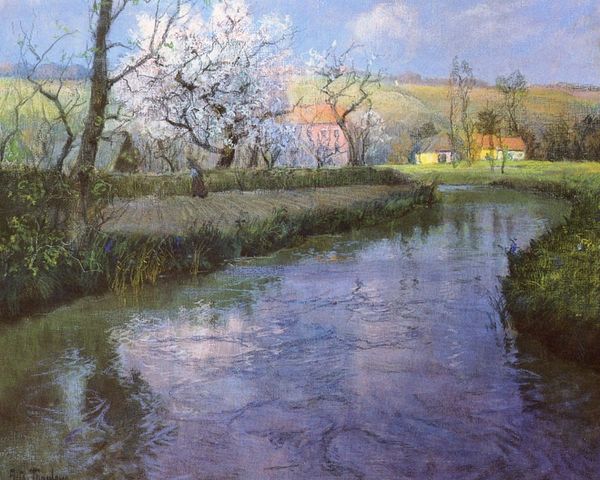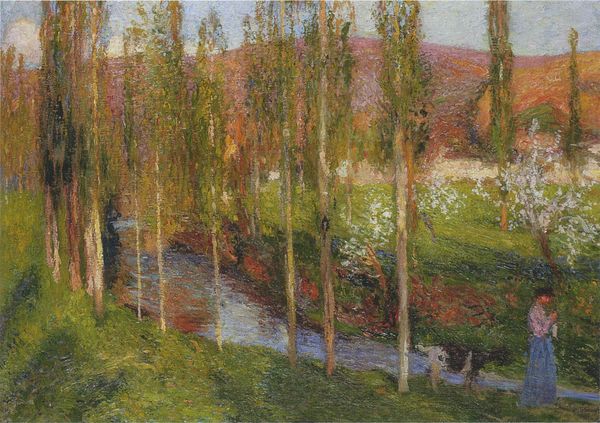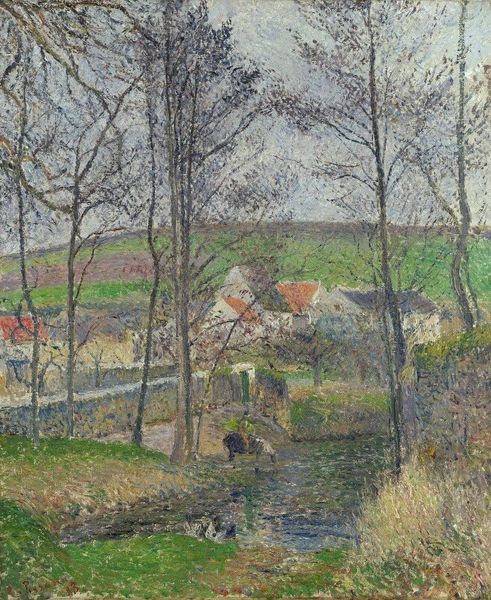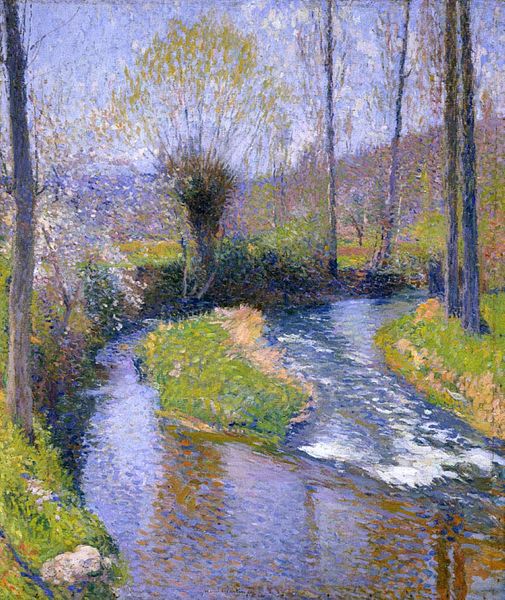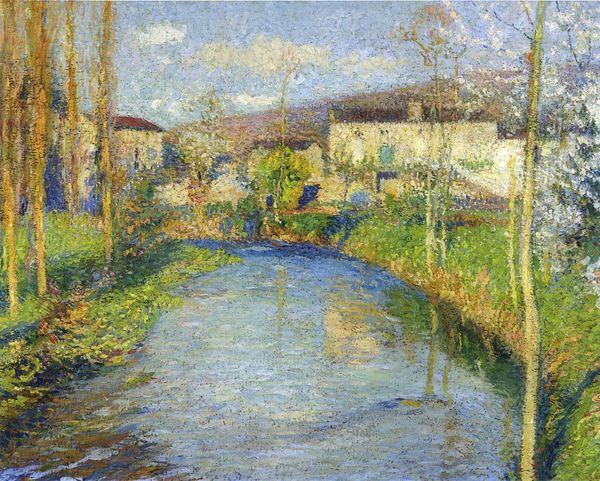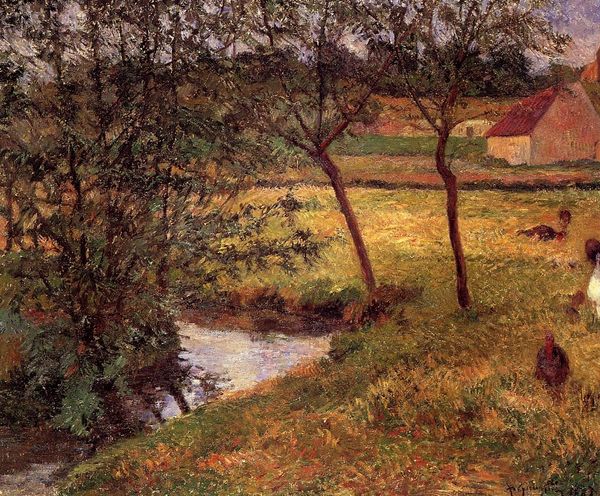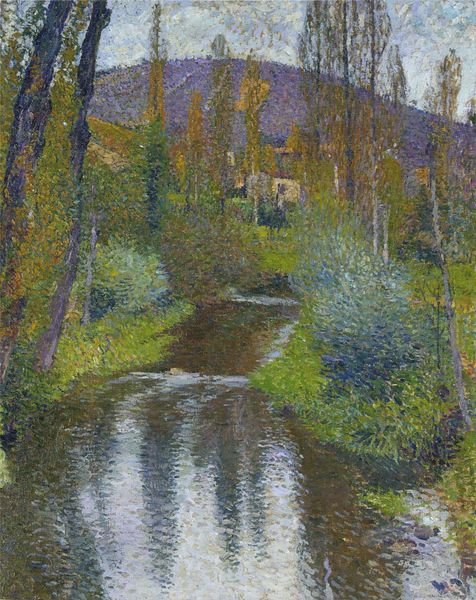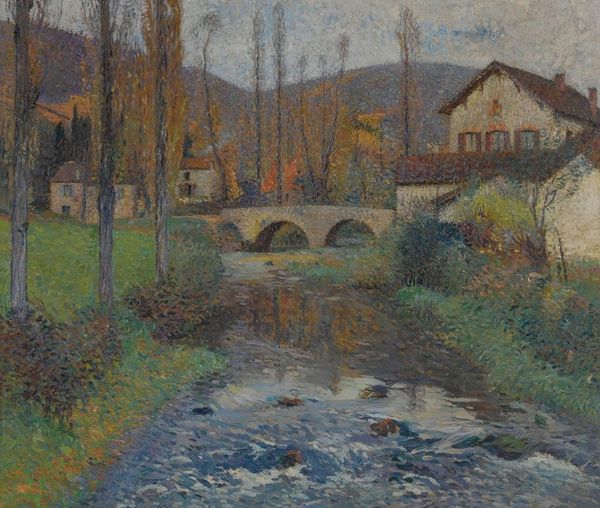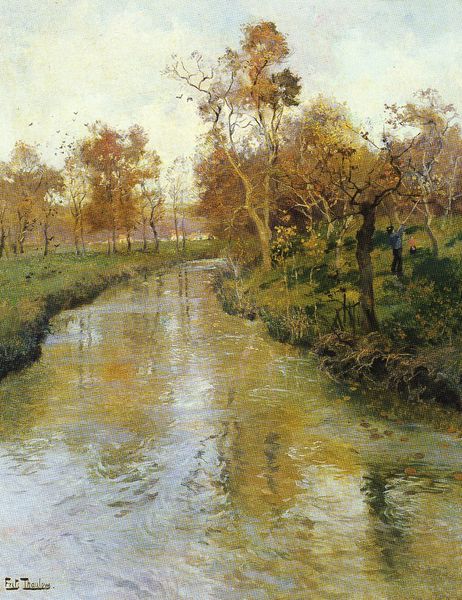
painting, plein-air, watercolor
#
tree
#
sky
#
rural-area
#
painting
#
impressionism
#
impressionist painting style
#
plein-air
#
landscape
#
landscape
#
river
#
impressionist landscape
#
nature
#
watercolor
#
water
#
nature
#
watercolor
Copyright: Public domain
Curator: This is "The Old Church by the River," a landscape piece, seemingly executed en plein air and in the Impressionist style, though we lack specific details on its date. Editor: Immediately, I’m drawn to how the surface of the water is handled—the reflections are almost a painting within a painting. It's quite serene. Curator: Indeed. It appears to be watercolor. Consider how plein air painting impacted artistic production; the accessibility of portable materials fostered direct engagement with subjects and redefined the artist's studio practice. Editor: Note how Thaulow constructs depth through color. The cool blues and violets of the water contrast effectively against the warmer tones in the architecture and the trees beyond, pulling the viewer into the scene. Curator: Right, but let's also address what this scene is telling us about late 19th century social structures. Rural scenes became highly desirable as urban populations grew. Consider, this picturesque depiction hides realities of rural labor. Who lives there? Editor: You are right; there is indeed a stark contrast to modernism's focus on industrial spaces. However, observe Thaulow's brushstrokes - quick, deliberate dashes, not purely mimetic, but interpretive of natural light and texture. Look closely, and you perceive the visual sensations of water. Curator: The labor is hidden! It emphasizes leisure and the romantic allure of country living, a marketing strategy even for the working class in their free time. Editor: Undoubtedly. Nonetheless, I am struck by its delicate balance of color and form; this arrangement creates a profound sense of tranquility. Curator: I am considering, finally, its function within the burgeoning art market. Rural scenes offered the upper and middle classes a sense of escapism, feeding into nostalgic consumerism. Editor: Perhaps, but it also functions formally to reflect nature, structure visual interest, and provide the aesthetic qualities we can value here. Curator: Fair, the dialogue between artistic intention and market forces always reveals itself in these period artworks. Editor: Precisely, an endless debate for endless analyses.
Comments
No comments
Be the first to comment and join the conversation on the ultimate creative platform.
